Electrochromic glass can reduce the need for cooling
A Swiss study has taken an in-depth look at the energy potential of electrochromic glass (ECG). Its conclusion is that the use of facades that incorporate electrochromic glass reduces the need for air conditioning. As we can expect heat waves to occur more and more frequently in future due to climate change, the use of electrochromic glazing is increasing in importance.
A Swiss study has taken an in-depth look at the energy potential of electrochromic glass (ECG). Its conclusion is that the use of facades that incorporate electrochromic glass reduces the need for air conditioning. As we can expect heat waves to occur more and more frequently in future due to climate change, the use of electrochromic glazing is increasing in importance.
Research has already been done in several studies into the various ECG products that are available on the market and how they can be developed further. In Switzerland in 2020, the current state of research was evaluated and examined for conclusions regarding the energy potential of ECG. The literature review was carried out by the School of Engineering and Architecture at the Lucerne University of Applied Sciences and Arts. The research results assessed show a mixed picture, as the use of ECG is dependent on a number of parameters. However, the international studies considered mostly indicate that the use of electrochromic glass can lead to energy savings. This applies in particular to buildings in warm or hot climate regions, and in these cases mostly to their east- and west-facing facades. The hypothesis developed in the literature review indicates that the use of ECG “during the warmer months of the year could lead to reduced energy requirements compared to conventional glazing with additional sun shading.”
Climate change boosts potential savings
Due to climate change, we are expecting increasingly frequent heat waves, including in climate zones that have been considered moderate until now, so the potential for energy savings offered by ECG is set to rise further. The focus of efforts to optimize energy consumption in buildings is increasingly shifting to the six months spanning the summer. According to the review, the use of electrochromic glazing is therefore gaining in importance.
Clear advantages of ECG systems
The Swiss literature review attributes clear advantages to ECG systems compared with facade systems that comprise conventional glazing and additional sun shading. Accordingly, for instance, ECG’s lack of mechanical elements makes maintenance and cleaning easier, which in turn results in lower costs. The review highlights the unrestricted availability of solar protection, even in high winds, as a unique selling point of ECG facades. The use of ECG facades also means unobstructed views at any tint level. To achieve a high level of daylight and a neutral color perception in a room, it is recommended to use smart control strategies that allow only certain areas of the glass or individual facades to be tinted, while others remain clear to let the light in.
Project-specific approach
The review concludes that the decision to install electrochromic glazing should always be based on a project-specific evaluation (e.g. via integral simulation calculations) if the primary focus is on increasing energy efficiency. In addition to the climate region, planning decisions such as the orientation of the facades, the size of their openings and the tint control method also play a role. The review also recommends project-specific life cycle analysis for the purposes of weighing up costs.
An interesting detail from the research under review indicates that a project-specific assessment should be based on the human factor, as well as energy calculations. A knowledge-sharing session revealed that employees in a building fitted with electrochromic glazing judged the approximately seven-minute transition time very differently than the fact-based project evaluation indicated: contrary to the calculations made for that location, users felt that the “slow” shift in brightness was positive and pleasant for the human eye.
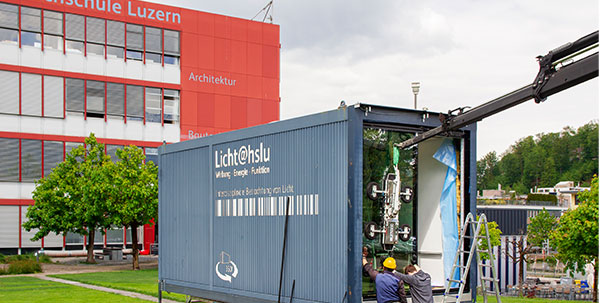
Installing the SageGlass HarmonyTM electrochromic glazing in the LichtMessContainer on the Lucerne University of Applied Sciences and Arts campus in Horw. ©Licht@hslu
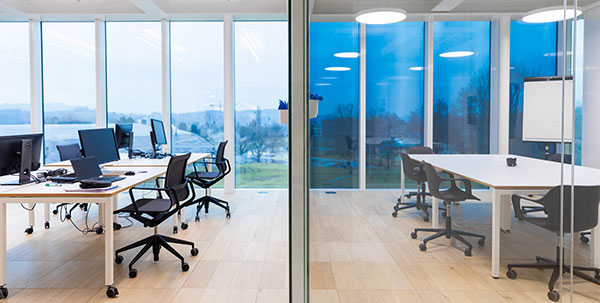
The need for cooling in buildings is reduced through the installation of facades with electrochromic glass. This has now been proven by a Swiss study. ©SageGlass
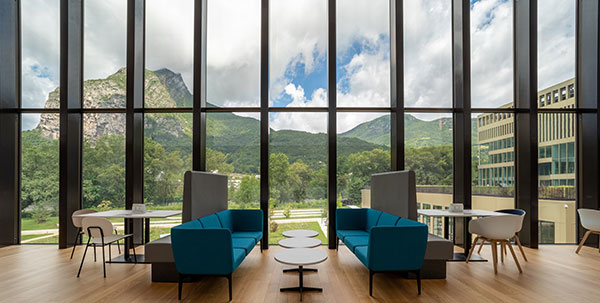
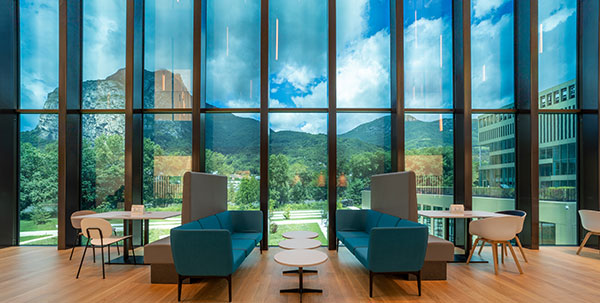
Efforts to optimize buildings’ energy consumption are increasingly focused on the six months spanning the summer. Electrochromic glazing is therefore gaining in importance. ©Valentin Napoli
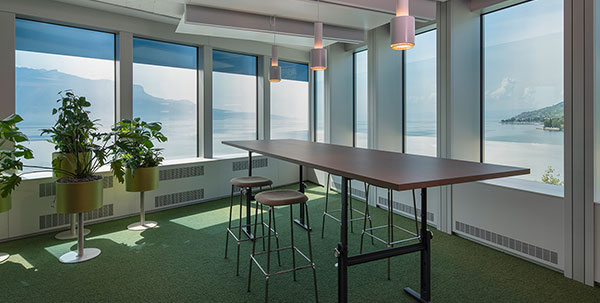
Tinting only certain areas allows as much daylight as possible to enter and a neutral color perception to be achieved. ©Adrien Barakat
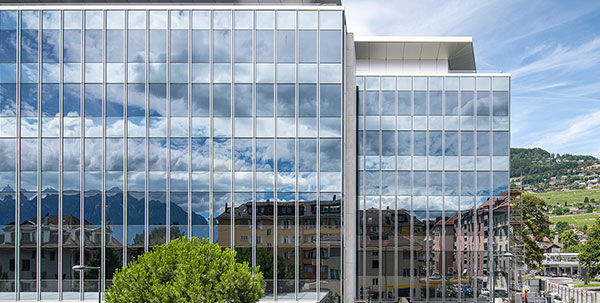
Opting for an ECG facade depends on several factors, such as its orientation, the size of its openings and the tint control method selected. ©Adrien Barakat